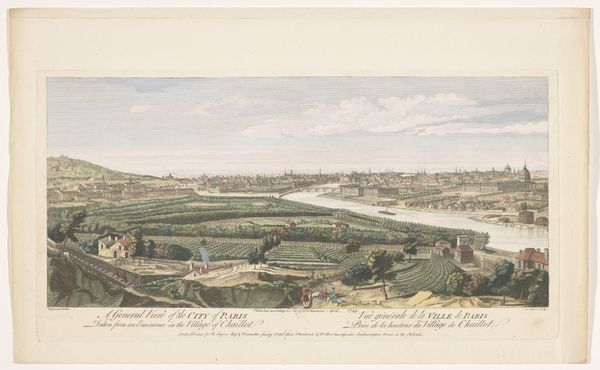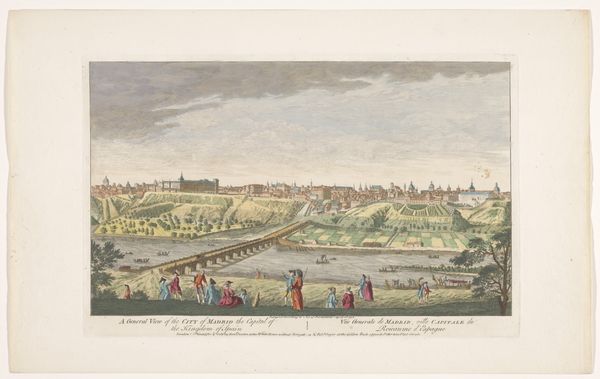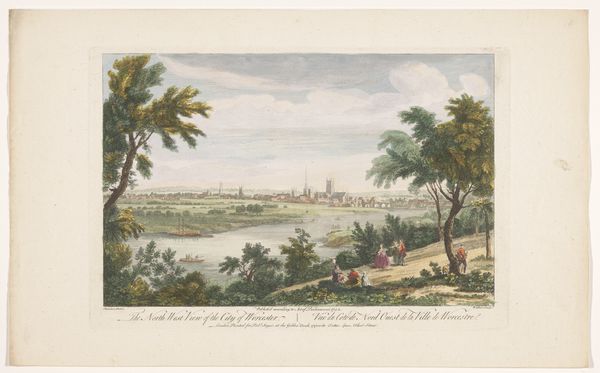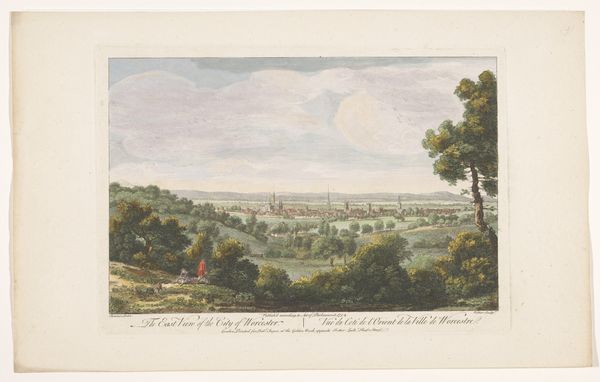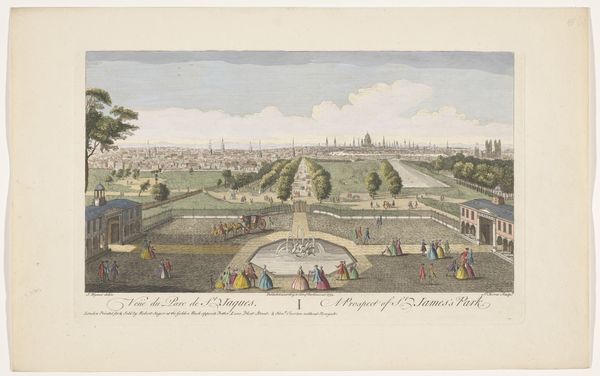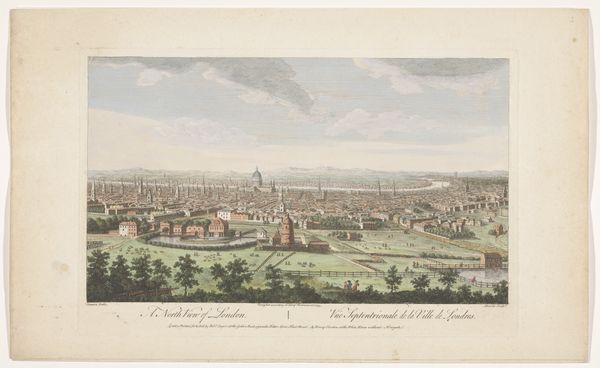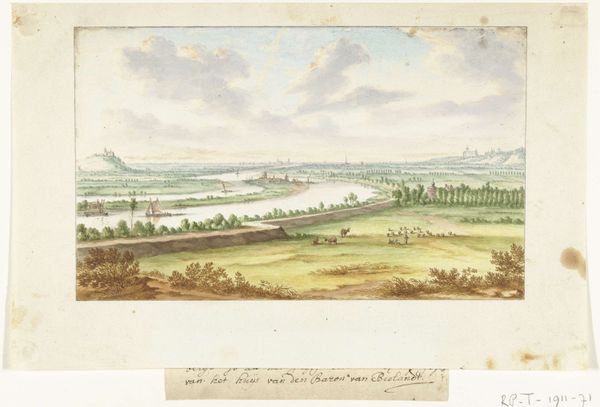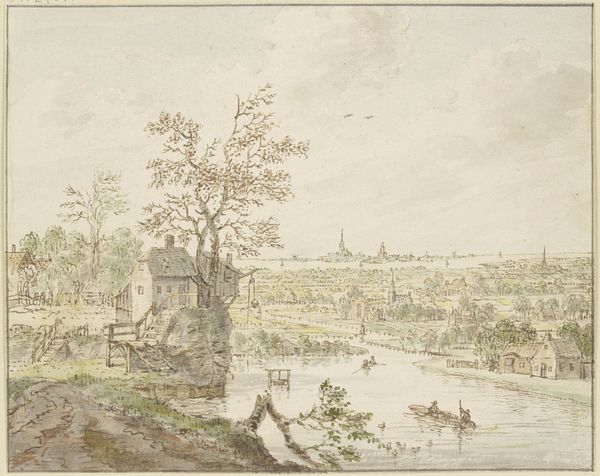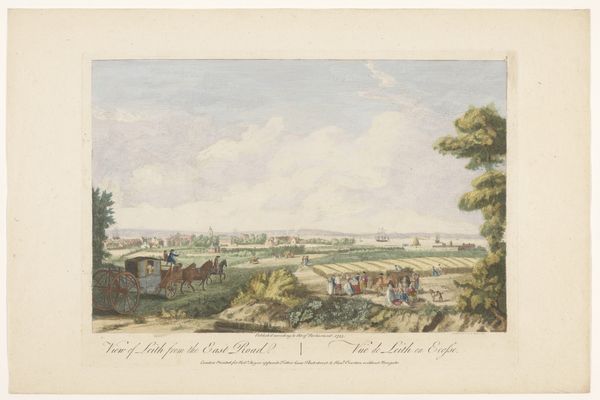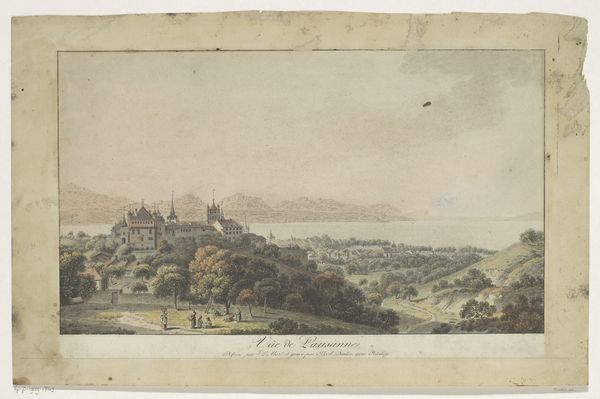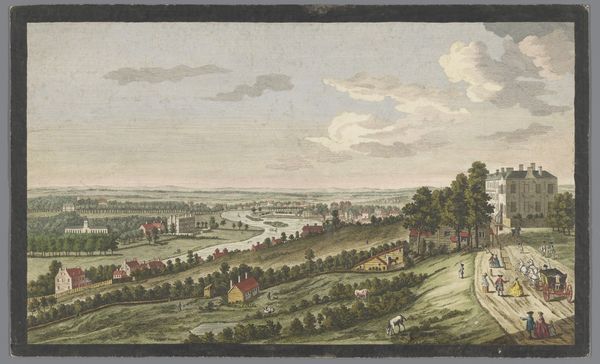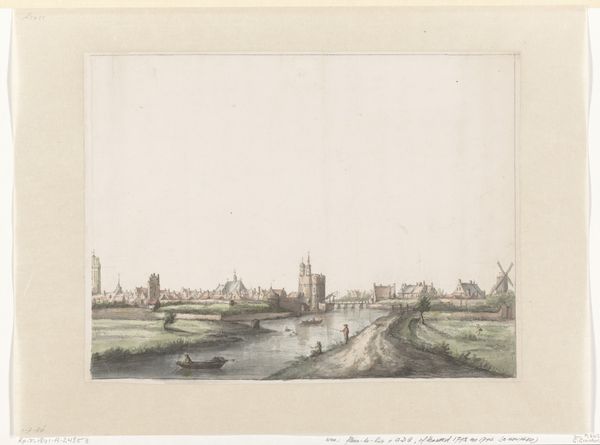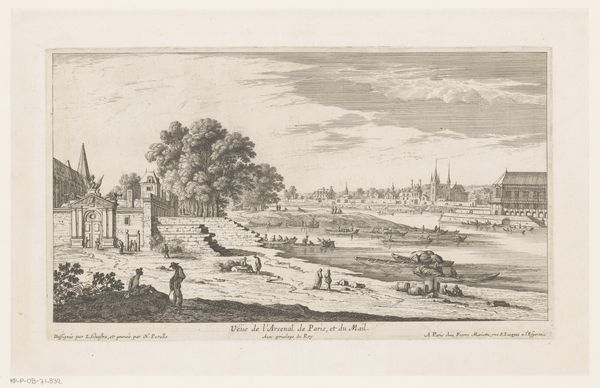
print, engraving
#
baroque
# print
#
landscape
#
cityscape
#
watercolour illustration
#
genre-painting
#
engraving
Dimensions: height 268 mm, width 402 mm
Copyright: Rijks Museum: Open Domain
Curator: Looking at this 1753 print, “Gezicht op de stad Dublin gezien vanaf Phoenix Park”, reveals so much about how cityscapes were conceived and conveyed back then. Robert Sayer, the artist, captured this vista in meticulous detail. Editor: Oh, it's all delicate greens and hazy blues. Like looking at Dublin through a vintage postcard. I get a real sense of the leisure, everyone just taking a stroll, utterly undisturbed. The little figures feel staged, like actors in a tableau. Curator: Indeed. The placement of figures in the foreground wasn’t accidental. These elements, like the strolling family and grazing cattle, suggest both an Arcadian harmony and project British aristocratic land ownership. Think about the gaze itself – this isn’t just a portrait of a city, it’s an act of possessing it through sight. Editor: Makes you wonder what the "real" Dublin was like outside this curated gaze, right? This feels like a projection of how they wished it to be, this balanced ideal, almost burying the potential unrest simmering underneath the surface. All those tiny houses nestled so neatly - what stories are absent from this narrative? Curator: Absolutely. What strikes me most is how prints like this functioned almost as PR for burgeoning cities. Mass-produced engravings democratized access to views once only beheld by the privileged, reinforcing aspirations and colonial control in equal measure. They built an illusion. Editor: And those towering steeples on the horizon...a deliberate power play? Visually, they are imposing. Religion looking down upon the "mere mortals." This city, like many, seemingly founded on ideals literally out of reach. I still love the pastoral innocence, even if a bit illusory. It draws me right in! Curator: I agree! This image is powerful in the cultural memories that are retained within this single cityscape print, we glimpse not just Dublin's appearance, but also a vision of power, class, and even propaganda as perceived almost 300 years later. Editor: Right, a window, but also a mirror reflecting our present interpretations. This stroll through the past feels like a timely one.
Comments
No comments
Be the first to comment and join the conversation on the ultimate creative platform.
